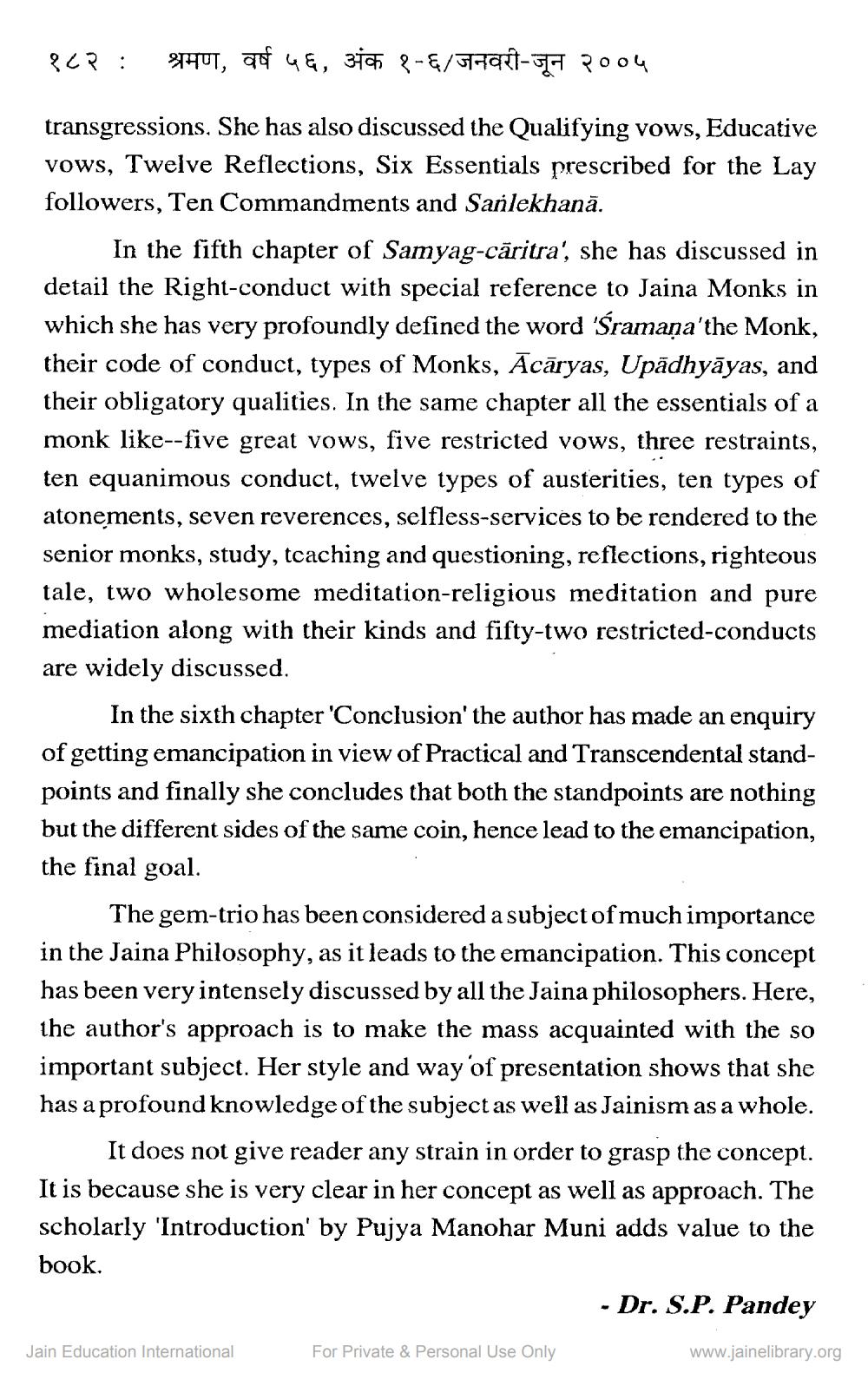________________
१८२ :
श्रमण, वर्ष ५६, अंक १-६/जनवरी-जून २००५
transgressions. She has also discussed the Qualifying vows, Educative vows, Twelve Reflections, Six Essentials prescribed for the Lay followers, Ten Commandments and Sarlekhanā.
In the fifth chapter of Samyag-cāritra', she has discussed in detail the Right-conduct with special reference to Jaina Monks in which she has very profoundly defined the word 'Sramaņa'the Monk, their code of conduct, types of Monks, Ācāryas, Upādhyāyas, and their obligatory qualities. In the same chapter all the essentials of a monk like--five great vows, five restricted vows, three restraints, ten equanimous conduct, twelve types of austerities, ten types of atonements, seven reverences, selfless-services to be rendered to the senior monks, study, teaching and questioning, reflections, righteous tale, two wholesome meditation-religious meditation and pure mediation along with their kinds and fifty-two restricted-conducts are widely discussed.
In the sixth chapter 'Conclusion' the author has made an enquiry of getting emancipation in view of Practical and Transcendental standpoints and finally she concludes that both the standpoints are nothing but the different sides of the same coin, hence lead to the emancipation, the final goal.
The gem-trio has been considered a subject of much importance in the Jaina Philosophy, as it leads to the emancipation. This concept has been very intensely discussed by all the Jaina philosophers. Here, the author's approach is to make the mass acquainted with the so important subject. Her style and way of presentation shows that she has a profound knowledge of the subject as well as Jainism as a whole.
It does not give reader any strain in order to grasp the concept. It is because she is very clear in her concept as well as approach. The scholarly 'Introduction' by Pujya Manohar Muni adds value to the book.
- Dr. S.P. Pandey
Jain Education International
For Private & Personal Use Only
www.jainelibrary.org




